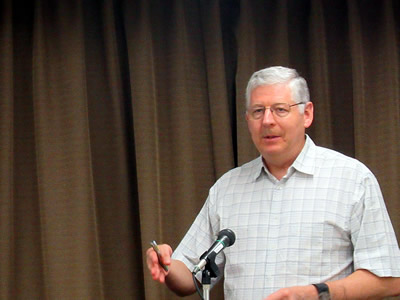The discovery that a mutation in FGFR3 caused achondroplasia was reported in 1994. Mutations in FGFR3 are associated with other skeletal disorders, including thanatophoric dysplasia and hypochondroplasia. A majority of them are gain-of-function mutations, resulting in short stature. On the other hand, there are two loss-of-function mutations in FGFR3 that cause CATSHL syndrome, characterized by tall stature.
Experiments were performed using a mouse model where we inactivated Fgfr1 and Fgfr2 with osterix (Osx)-Cre driver. Osx-Cre;Fgfr1f/f;Fgfr2f/f double conditional knockout is a mouse model in which Fgfr1 and Fgfr2 were inactivated with Osx-Cre driver (Osx-Cre DCKO). Fgfr1f/f;Fgfr2f/f double floxed mice without Cre were used as control mice (CTL). In Osx-Cre DCKO mice, impaired bone growth was observed, but no defect in mineralization. Both Osx-Cre DCKO and CTL mice looked similar in size at birth. Body weight in Osx-Cre DCKO mice was reduced compared with that in CTL mice beginning at 5 days after birth. Dual energy X-ray absorptiometry showed a decrease in bone mineral content with slightly increase in fat of Osx-Cre DCKO mice. In a radiographic analysis, Osx-Cre DCKO mice showed shorter bone, but the shape of bone was normal. Histological study revealed that Osx-Cre DCKO mice had shorter growth plate and smaller proliferating chondrocyte zone than CTL mice. The expression of Fgf9 and Fgf18 was increased in Osx-Cre DCKO mice. We hypothesized that Fgf9 and Fgf18 derived from osteoblasts suppressed chondrocyte proliferation. To prove this, we show that activation of Fgf9 in the perichondrium suppressed chondrocyte proliferation. Ihh and Pthlh expressions were decreased in Osx-Cre DCKO mice compared with those in CTL mice. Pth1r repressed Fgfr3 expression through PKA (published). PTH1-34 treatment rescued the phenotype of Osx-Cre DCKO mice. Abolishment of Osx-Cre activity in late fetus stage using doxycycline led to normal bone formation and rescued the phenotype of Osx-Cre DCKO mice. Thus, osteoblast Fgfr1 and Fgfr2 signaling is essential during late embryonic development.
Loss of Fgfr1 and Fgfr2 in mature osteoblasts using osteocalcin (OCN)-Cre increased cortical thickness beginning between 6 and 12 weeks of age, resulting in more brittle and easier to break bones in OCN-Cre DCKO compared with CTL mice. Osteocytes began to die in OCN-Cre DCKO mice beginning around 3 weeks of age. In gene expression test, Sost decreased in OCN-Cre DCKO, increasing Wnt signaling in OCN-Cre DCKO and potentially contributing to increased bone mass. These results indicate that Fgfr1 and Fgfr2 in mature osteoblasts regulates bone mass and osteocyte survival. Administration of tamoxifen in 3 week old Dmp1-Cre-ERT2 DCKO mice resulted in osteocyte death at 12 and 16 weeks of age and a regional increase in bone formation. These studies demonstrate that FGF signaling in mature osteoblasts is a negative regulator for bone formation.
(文責:中野由佳子,窪田拓生)
